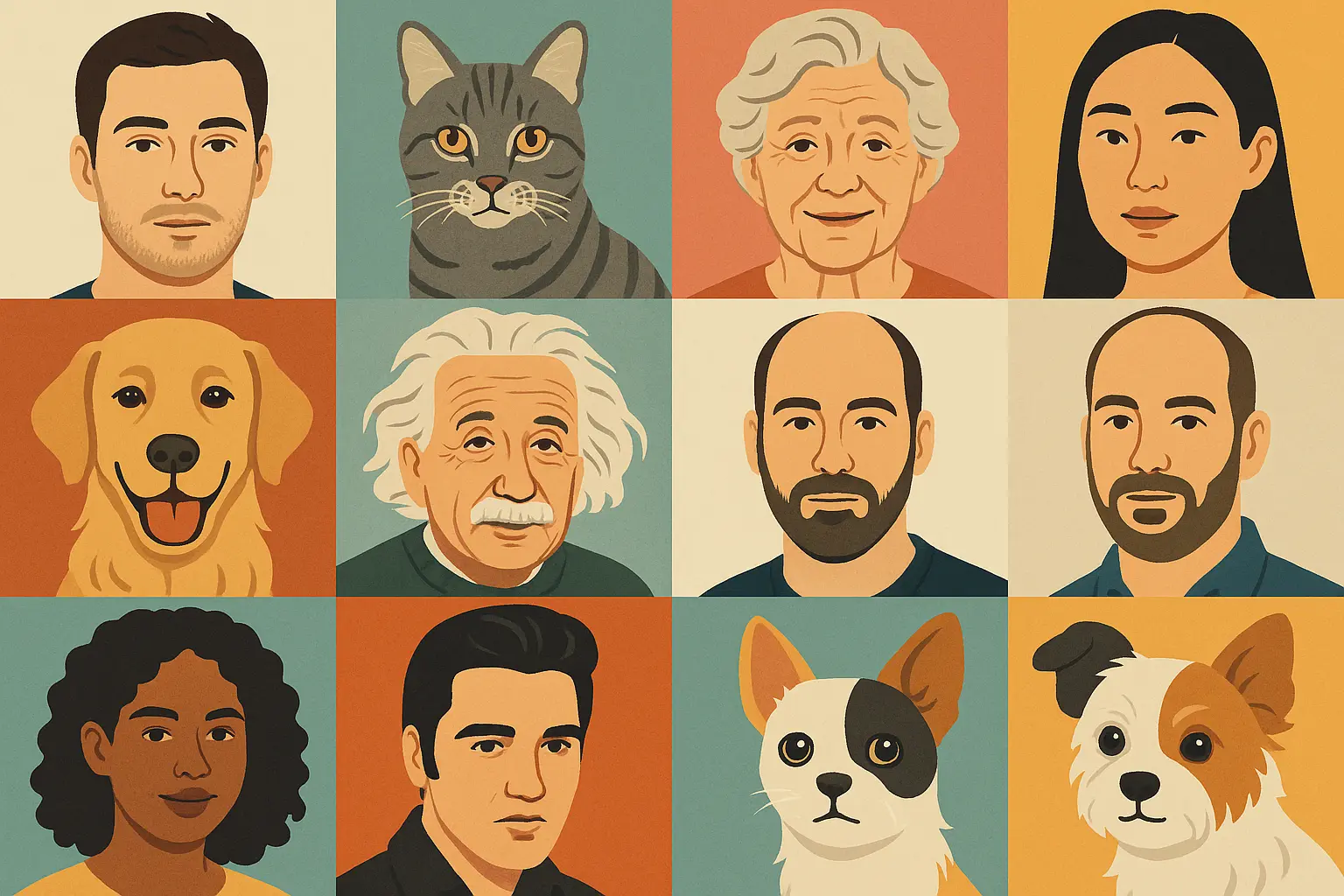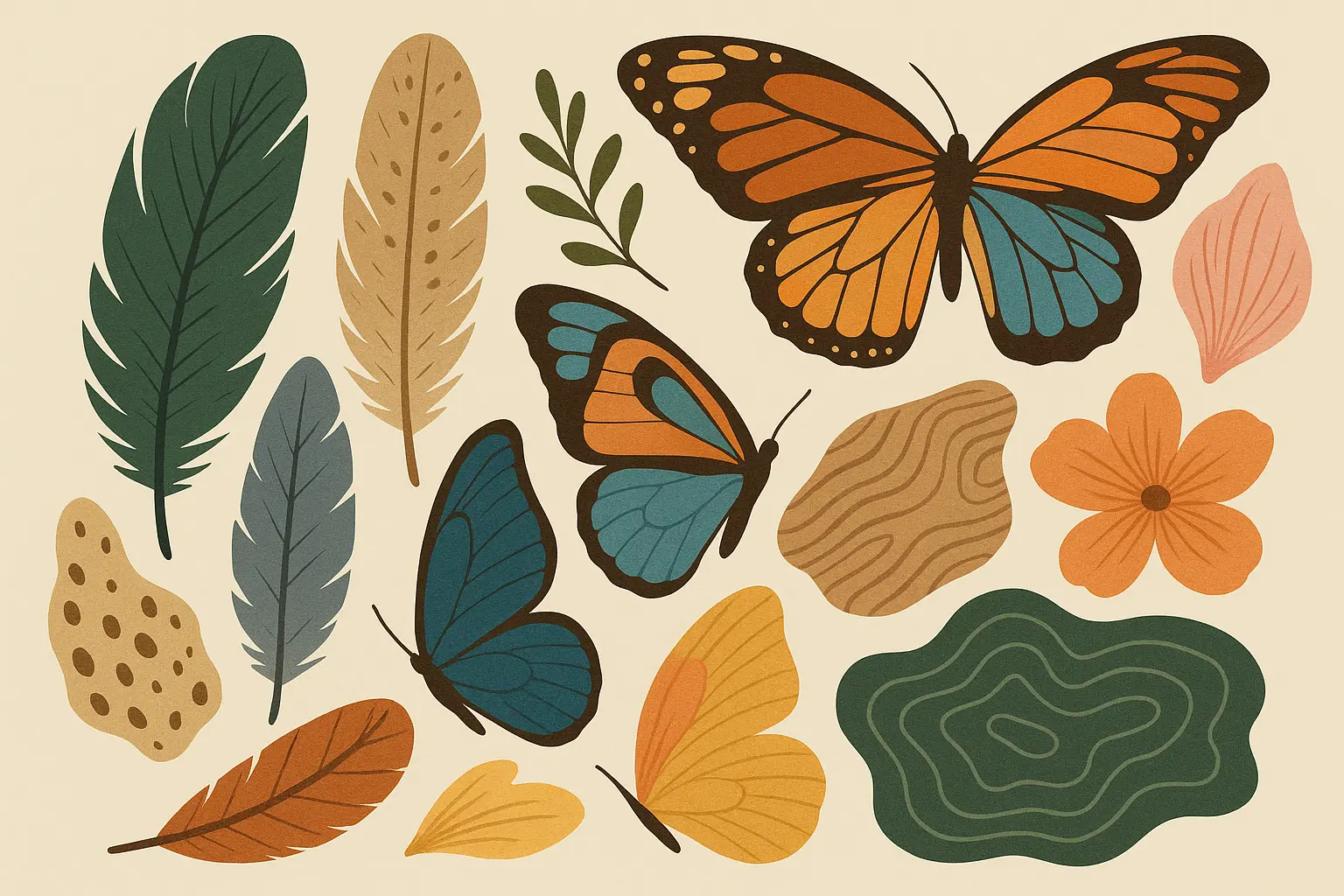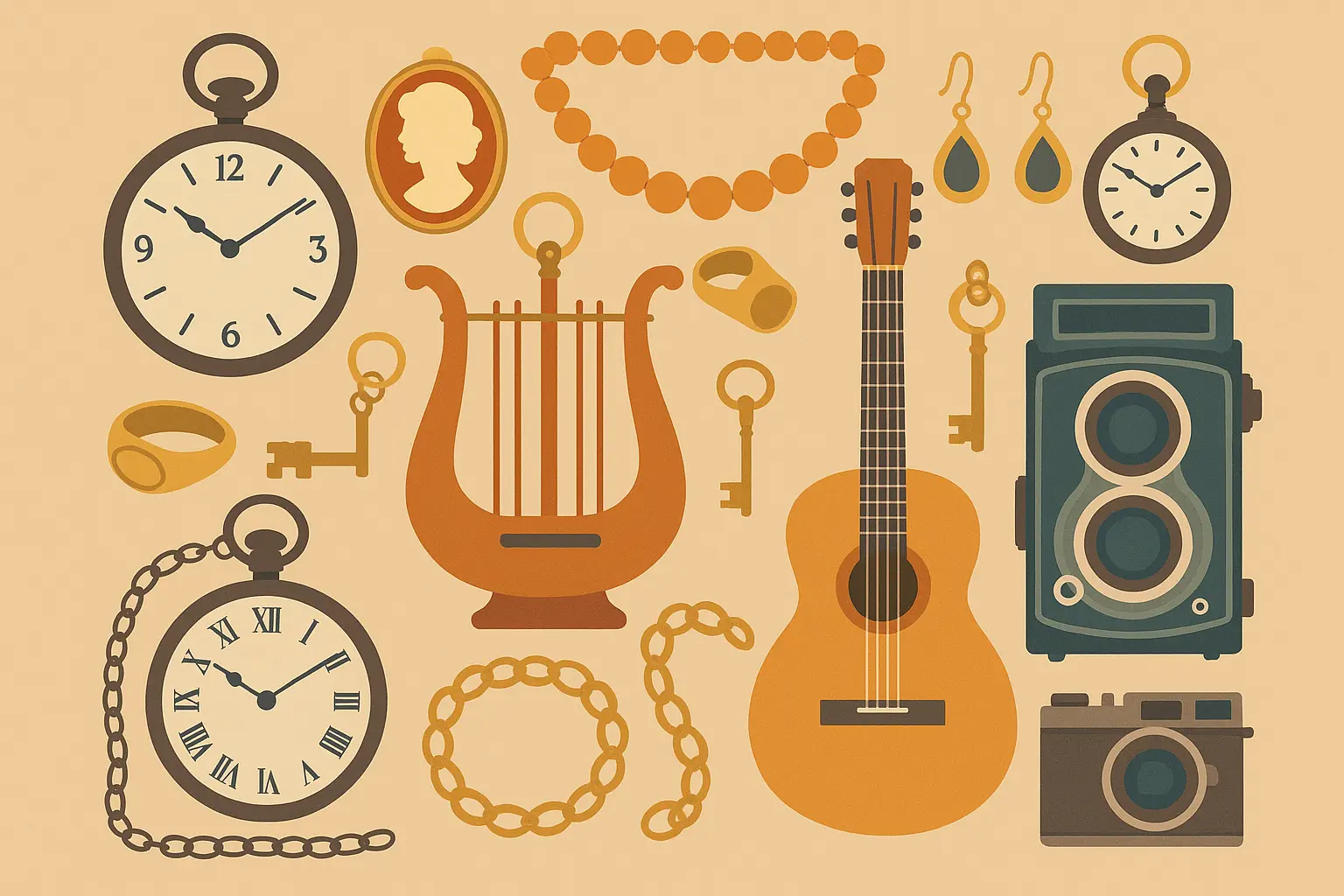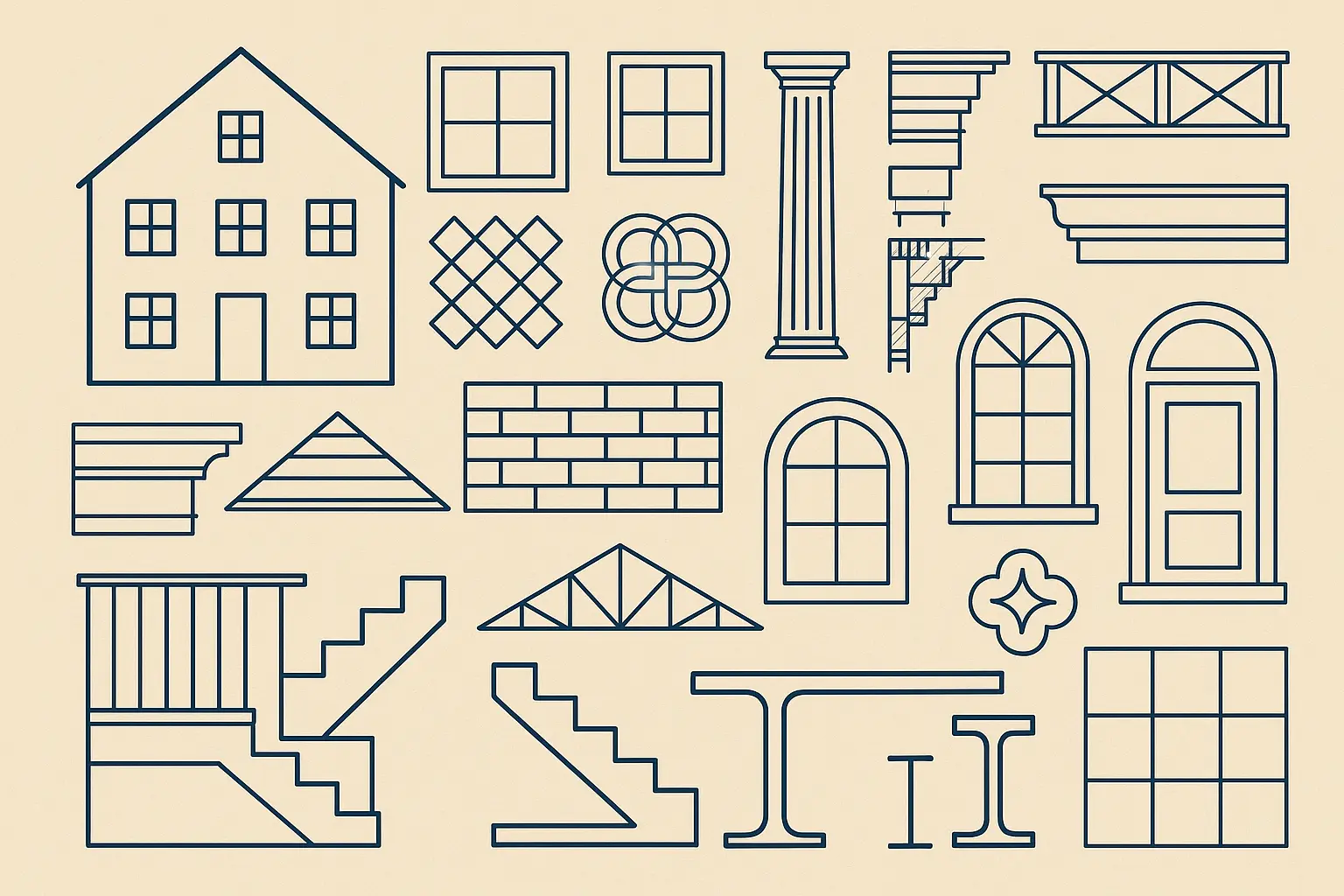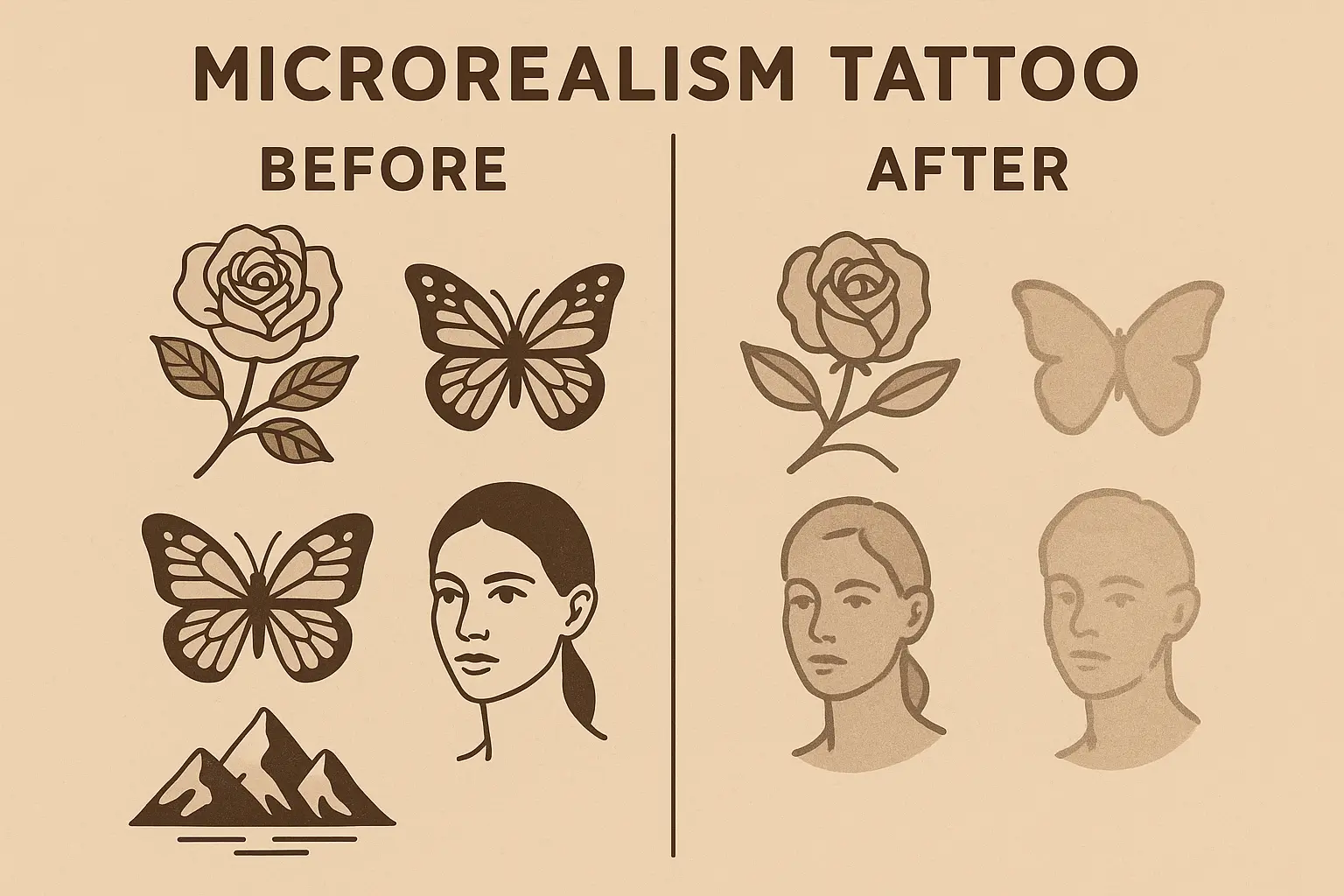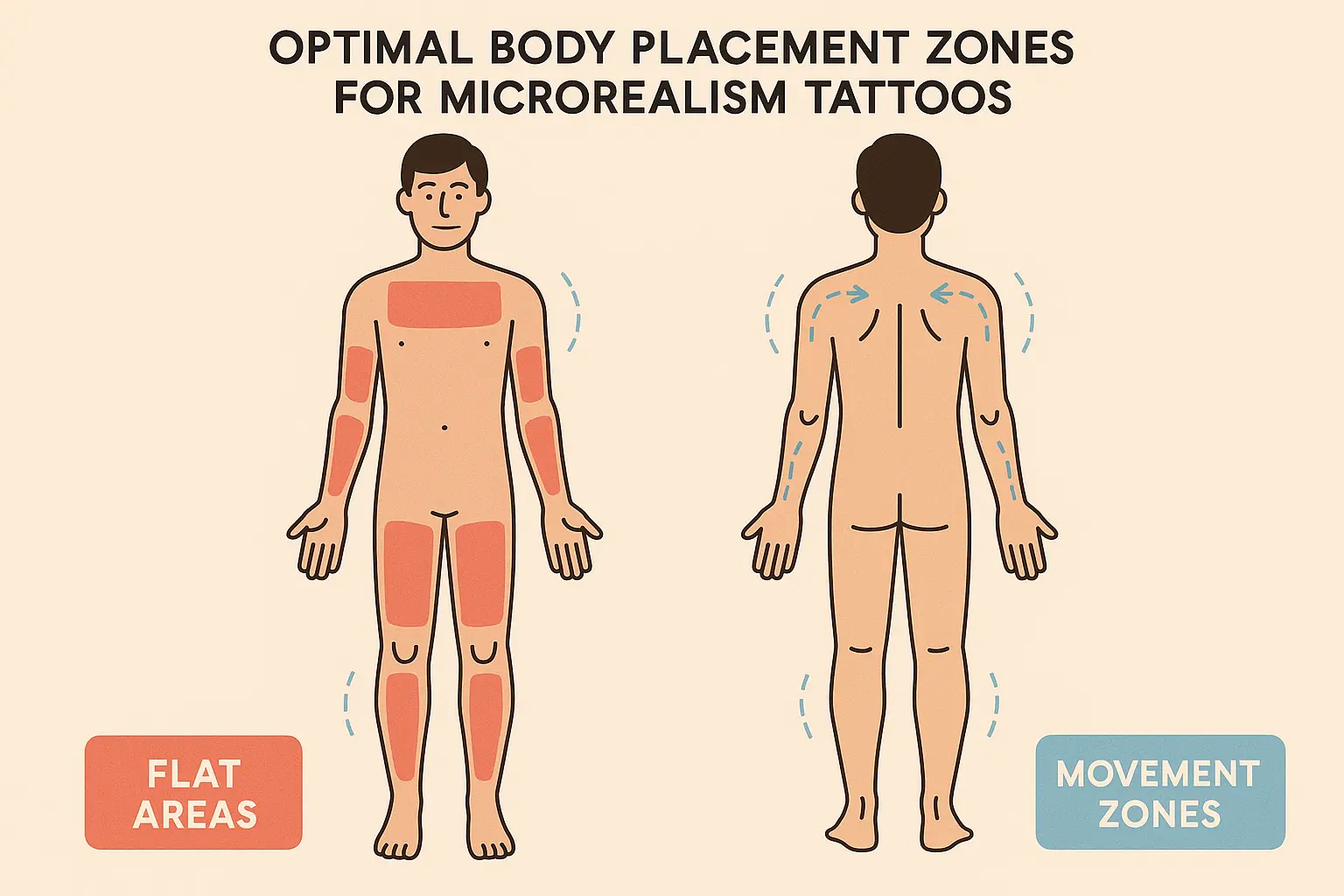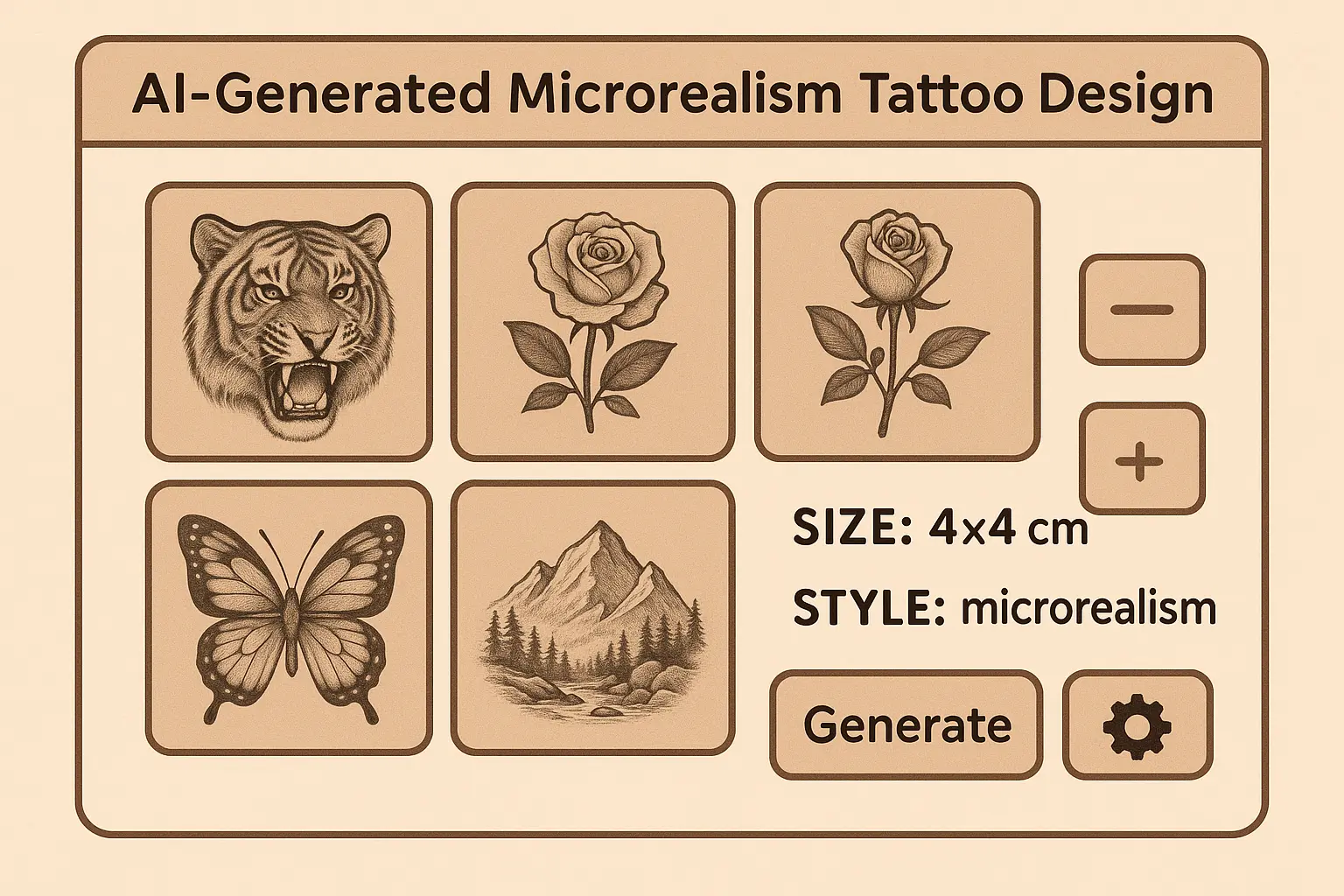25 Stunning Microrealism Tattoo Ideas That Will Transform Your Skin Into Art
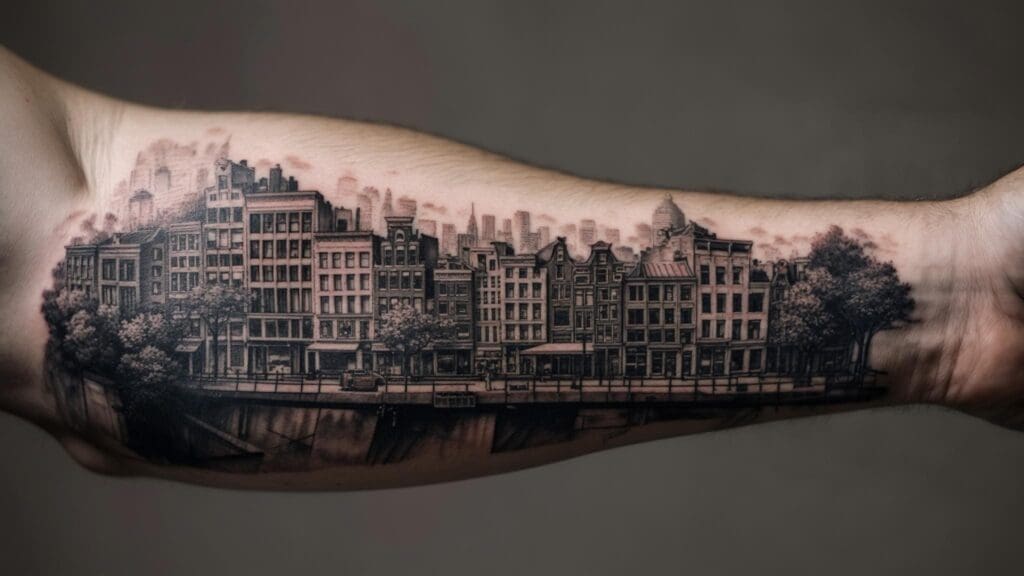
Micro realism tattoos have exploded in popularity, with artists noting these incredibly detailed pieces often require multiple sessions to complete due to their intricate nature. I remember walking into my first consultation completely unprepared for what I was getting into – what I thought would be a simple small realistic tattoo turned into this whole months-long journey of research, artist interviews, and way more planning than I expected. That experience taught me you really need to know what you’re signing up for before diving into micro realism.
Look, I’m not gonna sugarcoat this – these miniature masterpieces are complicated. You’re not just getting a tattoo; you’re investing in a highly technical art form that requires someone who really knows their stuff and realistic expectations about how it’ll look down the road.
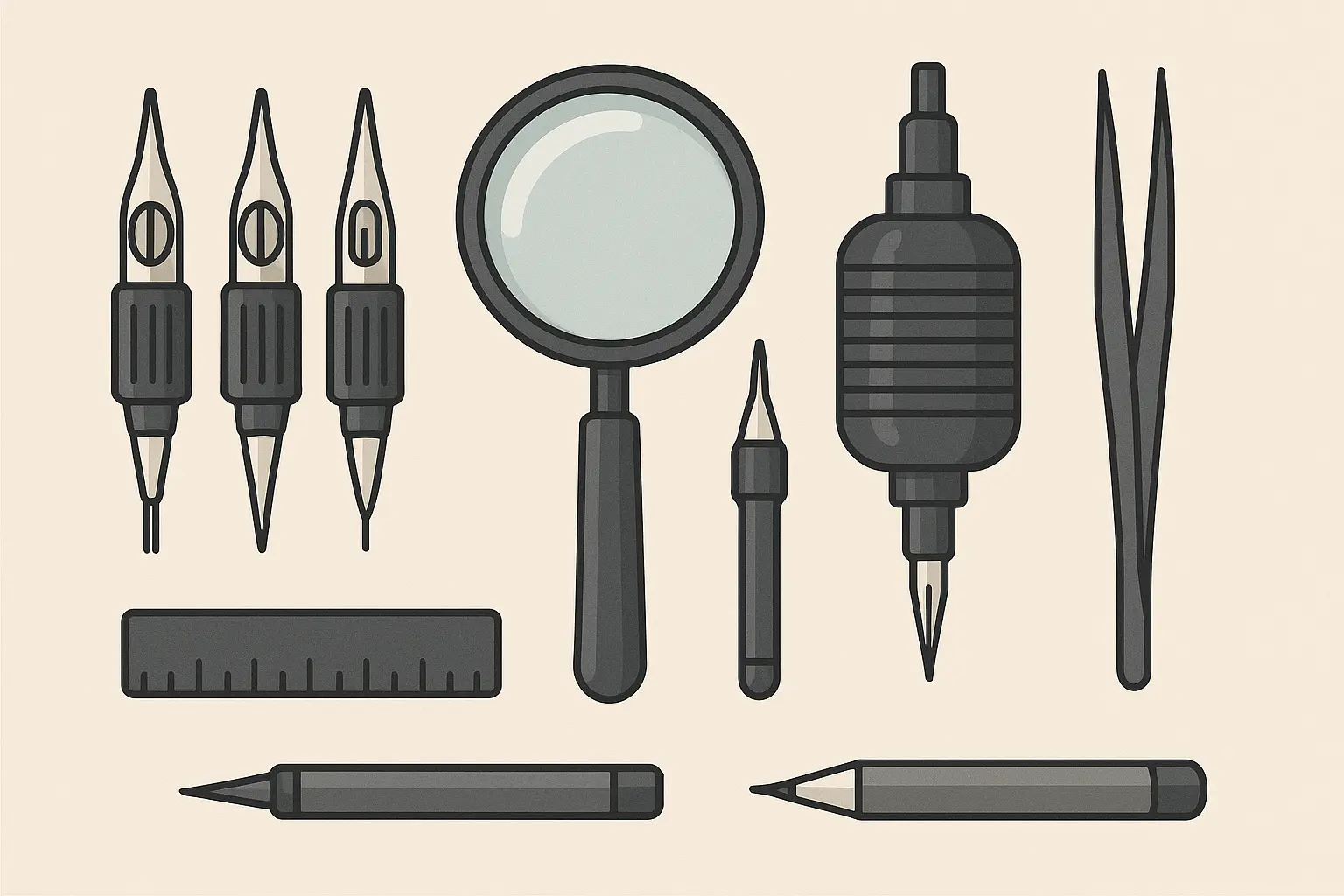
What You Actually Need to Know Before Getting One
Getting a microrealism tattoo isn’t like walking into any shop and picking something off the wall. These pieces need an artist who really knows their stuff when it comes to tiny, detailed work – we’re talking skills that take years to develop.
Before you commit to micro realism, you might want to check out fine line tattoo alternatives that could give you a similar look but might age better.
Here’s the real deal with microrealism vs regular tattoos: they take way longer (we’re talking 6+ hours sometimes), cost more, and need touch-ups more often. Your artist needs specialized skills that most general tattooers just don’t have. The sessions are brutal – sitting for 8 hours while someone does intricate detail work is no joke. And here’s something your artist might not tell you upfront – those super fine details that look amazing now? They’re going to get a bit fuzzy over the years. It’s just how skin works.
The placement thing is huge too. These designs work best on flat spots that don’t move much – think forearms, shoulder blades, or calves. Your wrist might seem like a cute spot for a tiny portrait, but trust me, all that hand movement will mess up those delicate details.
Sarah’s Reality Check: Sarah wanted a detailed portrait of her grandmother on her wrist. After talking to three different artists, she learned that wrist placement would totally distort the facial features every time she moved her hand. She ended up going with her forearm instead, where the flat surface could actually handle proper facial proportions. The artist spent 6 hours across two sessions, and it still looks sharp three years later with just one minor touch-up.
This is where most people mess up – they pick an artist based on location or price instead of actual skill. Don’t be that person. You need someone who doesn’t just create beautiful micro realism but actually understands why working at tiny scales is so tricky. Look at tons of their healed work, not just fresh Instagram photos.
And yeah, these aren’t cheap. You’re paying for years of specialized training plus the extra time it takes to get everything perfect.
25 Top Microrealism Tattoo Ideas Across Categories
Portrait Microrealism Designs
Portrait microrealism is basically the hardest thing you can ask a tattoo artist to do. You need someone who can nail facial proportions and capture actual emotion in a tiny space.
1. Pet Portrait Microrealism
Your pet’s personality shines through their eyes, and micro realism captures that connection like nothing else. These usually run about 2-3 inches and focus on what makes your furry friend unique – those perky ears, that goofy expression, or their distinctive markings.
Your artist needs to be really good at rendering fur texture and getting the eyes just right. Eyes are great because they age well – the contrast between dark pupils and lighter areas stays strong over time. Just don’t go crazy with whisker details that’ll blur out eventually.
Forearms or shoulder blades work best since you need a flat surface for the facial proportions to look right. Make sure your artist has a solid portfolio of animal work and can actually do convincing fur textures. Budget-wise, expect to pay premium prices because of the texture complexity and the fact that most people want multiple revision sessions to get their pet’s expression perfect.
2. Family Member Memorial Portrait
These carry the heaviest emotional weight in microrealism. You’re honoring someone you love through detailed facial work that captures their most recognizable features – those smile lines around their eyes, how they held their head, or that particular look you remember most.
This is probably the most demanding work you can ask for, requiring photorealistic facial proportions and the ability to capture emotion from old photos. Your artist needs to be sensitive about working with grieving clients and have real experience with memorial pieces.
A lot of people find comfort in checking out meaningful tattoo alternatives that honor loved ones through symbols instead of trying to capture an exact likeness.
The good news is these age pretty well when done with proper contrast. Focus on eyes and defining features rather than trying to capture every tiny detail. The emotional connection helps you recognize the person even as some details soften over time. Most people choose more private spots for these deeply personal pieces.
3. Self-Portrait Microrealism
Self-portraits in micro realism are unique conversation starters with deep personal meaning. These contemporary pieces show your own face in realistic detail, often mixed with elements that represent who you are.
The cool thing about self-portraits is you’re a live reference for your artist. This means multiple consultation sessions and adjustments that aren’t possible with other subjects. Since you know your own face so well, you’ll still recognize yourself even as details soften over time.
Placement is really up to you since it’s so personal. Some people want these front and center, others prefer more private locations. Expect to pay premium prices because of the personal significance and all the revision sessions that come with capturing yourself exactly how you want to be remembered.
4. Celebrity or Icon Portrait
Celebrity and icon portraits let you carry a piece of cultural history or personal inspiration. The trick is capturing those recognizable features that make someone instantly identifiable – think of what makes Elvis unmistakable or the features that define your favorite musician.
This stuff is really hard to do well because you’re working from limited photos and need to nail features that millions of people will recognize. Your artist has to understand which elements are most important for recognition. The good news is these age pretty well since recognition depends on key features that stay clear over time.
People often put these in visible spots where they become conversation starters about shared interests. Yeah, these aren’t cheap because of the recognition requirements and the skill needed for celebrity likeness work.
5. Child Portrait Microrealism
Child portraits capture innocence and joy in ways that photos sometimes can’t match. These focus on soft features that define childhood – bright eyes full of wonder, genuine smiles, or that peaceful sleeping expression.
This is challenging because kids’ faces lack the strong contrast lines you find in adult faces. Your artist has to create definition through gentle shading and careful proportions. The good news is childhood features stay emotionally significant even if details soften – you’ll always remember that specific moment in your child’s life.
Most people put these in more private locations because they’re so personal. Expect premium pricing because of the emotional significance, the technical challenges of rendering soft features, and the sensitivity required when working with parents who want everything perfect.
Nature and Wildlife Microrealism
Nature and wildlife microrealism shows off the natural world through crazy detailed work. Your artist needs specialized illustration skills and actual understanding of how animals and plants work.
6. Realistic Bird Microrealism
Birds make amazing micro realism subjects because of their natural detail complexity and symbolic meaning. Popular picks include owls with those piercing eyes and intricate feather patterns, eagles with powerful expressions, or songbirds with delicate plumage that really shows off your artist’s skill.
Your artist needs to really understand how feathers work and how to make them look realistic. They also need to nail the eye detail work. The good news is feather patterns age well because they provide natural contrast that stays interesting over time.
These work great on curved surfaces where wing shapes actually complement your body’s natural contours. The organic forms adapt well to body geometry while keeping their natural proportions. Expect high prices because of texture complexity and the specialized wildlife illustration skills needed.
7. Butterfly Wing Detail
Butterfly wings are some of the most intricate patterns in nature, making them perfect for showing off microrealism technique. These focus on wing patterns and delicate structures, often with realistic color gradients and the intricate designs that make each species unique.
This is extremely complex work requiring precise pattern work and delicate color transitions. Your artist needs to understand wing patterns like a scientist and have advanced color theory skills to recreate nature’s precision.
Fine wing details might blur over time, but overall pattern recognition stays strong. The geometric nature of wing patterns helps maintain visual structure even as individual elements soften. These work best on flat surfaces where wing symmetry can be properly displayed. Expect premium pricing because of color work complexity and the specialized knowledge needed.
8. Realistic Eye (Human or Animal)
Eyes carry incredible symbolic power and are probably the most technically challenging thing in micro realism. These create hyper-realistic renderings with detailed iris patterns, natural reflections, and surrounding skin texture that makes the eye look alive.
This requires understanding eye anatomy, how reflections work, and emotional expression. Your artist has to master the subtle gradations that make eyes appear alive and the technical skills for convincing reflections. The great news is these age excellently because of the strong contrast between pupil, iris, and the white part.
This natural contrast keeps visual impact for decades, making eye tattoos some of the most enduring microrealism subjects. Eyes create dramatic impact regardless of where you put them. Expect the highest prices because of technical demands and the exceptional skill required.
9. Flower Petal Microrealism
Flower petals show off nature’s delicate beauty through micro realism’s precise technique. These capture single flowers or detailed petal studies with realistic texture, natural shading, and the subtle imperfections that make flowers look real rather than fake.
The Rose That Actually Lasted: Maria got a single rose bloom on her shoulder blade, focusing on the natural imperfections and subtle color variations that made it uniquely beautiful. Five years later, while some of the finest vein details have softened, the overall shape and emotional impact are still as striking as day one. The organic curves adapted naturally to minor skin changes, proving that well-done botanical designs age gracefully.
If you’re thinking floral, check out traditional flower tattoo designs for different approaches to botanical body art.
This requires understanding how plants actually work and organic texture rendering. The good news is these age excellently because organic shapes and natural imperfections age gracefully with minimal definition loss. They adapt well to various body contours because of natural flowing shapes. Expect moderate to high prices depending on how complex the species is and how botanically accurate you want it.
10. Realistic Insect Study
Insect studies offer unique subject matter that shows off microrealism’s ability to capture scientific accuracy in tiny form. Popular choices include detailed beetles with complex exoskeletons, moths with intricate wing patterns, or other insects that demonstrate nature’s incredible design complexity.
This is very complex work requiring scientific accuracy and understanding of how to render exoskeletons. Your artist needs scientific illustration background and comfort with subject matter that many people find challenging.
The good news is these age well because segmented body structure and wing patterns provide lasting definition. The geometric nature of insect anatomy helps maintain visual clarity over time. These work best on flat surfaces where anatomical accuracy can be properly displayed. Expect high prices because of scientific accuracy requirements and specialized knowledge demands.
Object and Still Life Microrealism
Object and still life microrealism transforms everyday items into miniature masterpieces through technical precision and material rendering expertise. Most age excellently because of strong material contrasts and structural elements that keep their definition over time.
11. Vintage Pocket Watch
Vintage pocket watches combine mechanical complexity with nostalgic appeal, making them perfect micro realism subjects. These show detailed timepieces with visible gears, Roman numerals, and realistic metal textures that demonstrate your artist’s technical precision.
Your artist needs to understand how mechanical components work and how to make metal look metallic. They have to master different metal surfaces, gear mechanisms, and how light reflects off polished and brushed surfaces. The good news is these age excellently because mechanical elements and strong contrast between materials keep their definition over time.
These work well on forearms or chest areas where the circular design complements body geometry. The symbolic nature of time makes these meaningful in various locations. Expect high prices because of mechanical complexity and the precision needed for convincing timepiece construction.
12. Realistic Jewelry Piece
Jewelry pieces in micro realism capture the luxury and personal significance of meaningful accessories. These detailed renderings of rings, necklaces, or earrings show realistic metal work and gem details that often represent heirloom pieces or significant gifts.
This is very complex work requiring gemstone rendering skills and understanding of precious metal textures. Your artist has to master light reflection, surface properties of different metals, and how gems interact with light.
The good news is these age excellently because reflective surfaces and strong material contrasts age beautifully. The interplay of different textures and materials provides lasting visual interest for decades. People often put these in locations that complement where the actual jewelry would be worn. Expect premium pricing because of material complexity and precision requirements.
13. Musical Instrument Detail
Musical instruments offer rich detail opportunities for microrealism artists. These capture portions of piano keys, guitar strings, violin scrolls, or other instrument details with realistic wood grain, metal work, and construction elements that make each instrument unique.
This is highly complex work requiring understanding of how instruments are built and material properties. Your artist needs to know how different woods age, how metal strings reflect light, and how various instrument components fit together. The good news is these age excellently because structural elements and material contrasts provide lasting visual appeal.
These work well on areas that complement the instrument’s natural proportions – long instruments on forearms or legs, circular elements on shoulders or back areas. Expect high prices because of technical accuracy requirements and specialized knowledge needed.
14. Realistic Food Item
Food items provide unique subjects that can carry personal significance or cultural meaning. These detailed renderings of fruit, pastries, or other food items show realistic texture, natural shading, and the subtle imperfections that make food appear authentic.
This ranges from moderate to high complexity, requiring understanding of organic textures and natural lighting. Your artist needs still life experience and knowledge of how different food surfaces interact with light. The good news is organic shapes age naturally while staying recognizable.
Placement offers flexibility but you need to consider appropriateness. Some food items work better in certain locations based on cultural or personal comfort levels. Expect moderate pricing that increases with texture complexity.
15. Vintage Camera or Lens
Vintage cameras and lenses celebrate photography’s mechanical beauty through microrealism’s precise technique. These show classic camera bodies or lenses with realistic metal work, brand details, and mechanical elements that demonstrate analog photography equipment craftsmanship.
This is very complex work requiring understanding of optical equipment and precision manufacturing details. Your artist has to master metallic surfaces, glass rendering, and the mechanical precision that defines quality camera equipment.
The good news is these age excellently because mechanical precision and material contrasts keep their definition over time. The structural nature of camera components provides lasting visual appeal. These work best on flat surfaces where technical details can be properly appreciated. Expect high prices because of technical precision requirements and specialized knowledge needed.
Architectural and Geometric Microrealism
Architectural and geometric microrealism combines mathematical precision with realistic rendering techniques. These age exceptionally well because of structural elements and clean lines, requiring advanced perspective understanding while offering the best long-term aging characteristics in microrealism.
16. Realistic Building or Landmark
Buildings and landmarks capture architectural beauty and personal significance through micro realism’s detailed approach. These feature meaningful structures – childhood homes, famous landmarks, or architecturally significant buildings – with realistic perspective and construction details.
This is very complex work requiring architectural understanding and perspective mastery. Your artist has to understand building construction, material properties, and how architectural elements work together. The good news is these age excellently because structural lines and architectural elements stay clear for decades.
You need adequate space for proper perspective and architectural detail display. Buildings need sufficient area to maintain their proportional relationships. Expect premium pricing because of architectural accuracy requirements and specialized knowledge needed.
17. Geometric Pattern with Realistic Shading
Geometric patterns with realistic shading combine mathematical precision with dimensional depth effects. These feature mathematical patterns – often sacred geometry – rendered with realistic shadows, depth, and dimensional effects that make flat patterns appear three-dimensional.
Those interested in geometric precision might also consider traditional geometric tattoo approaches that offer bold, long-lasting alternatives to microrealistic rendering.
|
Design Category |
How They Age |
Difficulty Level |
Price Range |
Best Spots |
|---|---|---|---|---|
|
Portrait Microrealism |
Pretty good (if done right) |
Really Hard |
Premium |
Flat surfaces, private areas |
|
Nature & Wildlife |
Excellent |
Hard |
High |
Curved surfaces, visible areas |
|
Object & Still Life |
Excellent |
Hard to Really Hard |
High to Premium |
Flat surfaces, forearms |
|
Architectural & Geometric |
Excellent |
Really Hard |
Premium |
Large flat areas |
|
Fantasy & Conceptual |
Depends |
Extremely Hard |
Premium+ |
Depends on concept |
This is highly complex work combining mathematical precision with realistic rendering techniques. Your artist needs both geometric accuracy skills and advanced shading expertise to create convincing dimensional effects. The good news is geometric precision ages better than any other micro realism category.
These work well on areas with natural symmetry or where pattern repetition can enhance body contours. Geometric designs often complement natural body geometry effectively. Expect high prices, but these pieces offer excellent long-term value because they age so well.
18. Realistic Staircase or Pathway
Staircases and pathways offer powerful symbolic potential through perspective-based microrealism. These create studies of stairs, paths, or corridors with realistic depth, texture, and lighting effects that often represent life journeys, transitions, or personal growth.
This is very complex work requiring advanced perspective understanding and depth rendering skills. Your artist has to master vanishing points, atmospheric perspective, and how light and shadow create convincing three-dimensional space.
The good news is these age excellently because perspective lines and structural elements keep their visual impact over time. The geometric nature provides lasting definition that persists through natural aging. These work best on elongated body areas where perspective can be properly developed. Expect premium pricing because of perspective complexity and advanced technical skills required.
19. Detailed Window or Door
Windows and doors carry symbolic meaning about opportunities, transitions, and life passages. These architectural elements feature realistic wood grain, metal hardware, glass reflections, and weathering effects that show off material rendering expertise.
This is highly complex work requiring understanding of architectural details and material rendering. Your artist has to master different surface textures, glass properties, metal hardware, and how these elements work together. The good news is these age excellently because architectural elements and material contrasts age gracefully.
These work well on areas where rectangular proportions complement body geometry. The architectural nature often works best on flatter body surfaces. Expect high prices because of architectural precision requirements and technical skills needed.
20. Realistic Bridge Structure
Bridge structures combine engineering precision with symbolic meaning about connection, transition, and overcoming obstacles. These feature detailed bridge construction with realistic materials, perspective, and structural elements that showcase engineering beauty.
This is very complex work requiring engineering understanding and structural accuracy. Your artist has to understand load-bearing elements, material properties, and how engineering principles create functional structures. The good news is these age excellently because engineering elements provide the best aging characteristics in micro realism.
You need adequate space for proper structural proportion and engineering detail display. Bridges need sufficient area to maintain their engineering relationships. Expect premium pricing because of engineering complexity and specialized knowledge required.
Fantasy and Conceptual Microrealism
Fantasy and conceptual microrealism pushes technical boundaries through physics-based subjects and abstract concepts. These demand specialized knowledge in physics, atmospheric effects, and material behavior, with aging success depending heavily on execution technique and contrast management.
21. Realistic Water Droplet
Water droplets demonstrate technical mastery through physics-accurate rendering of reflections, refraction, and surface tension. These often include reflected imagery within the droplet, creating miniature worlds that show off your artist’s understanding of light physics.
This is extremely complex work requiring advanced understanding of light physics and reflection rendering. Your artist has to master refraction effects, surface tension properties, and how light behaves when passing through water. The good news is simple forms age well, though complex internal reflections may lose definition over time.
These work anywhere and create dramatic impact because everyone recognizes water. Water symbolism resonates across cultures and personal experiences. Expect premium pricing because of physics complexity and specialized knowledge required.
22. Realistic Cloud Formation
Cloud formations showcase atmospheric beauty through realistic lighting and natural structure. These feature detailed cloud studies with atmospheric perspective and natural lighting that captures the majesty of weather phenomena.
This is highly complex work requiring atmospheric understanding and natural lighting mastery. Your artist needs landscape illustration experience and knowledge of how atmospheric effects create depth and dimension.
The good news is these age excellently because organic forms and natural shading patterns age gracefully. The flowing nature of clouds adapts well to skin changes while maintaining their natural beauty. These work well on larger areas where atmospheric scale can be properly represented. Expect high prices because of atmospheric complexity and specialized skills needed.
23. Detailed Smoke or Vapor
Smoke and vapor patterns offer dynamic visual appeal through fluid dynamics and atmospheric effects. These capture realistic smoke patterns with natural flow, density variations, and lighting effects that often incorporate symbolic elements within the flowing forms.
This is very complex work requiring fluid dynamics understanding and atmospheric rendering expertise. Your artist has to understand how smoke behaves, density variations, and how light interacts with particles. The good news is flowing organic forms stay visually interesting as fine details soften over time.
These work excellently on areas where flowing forms complement natural body contours. Smoke patterns can enhance body geometry while maintaining their natural movement characteristics. Expect high prices because of fluid dynamics complexity and specialized knowledge required.
24. Realistic Fabric Texture
Fabric textures demonstrate textile rendering mastery through realistic draping and material properties. These show detailed cloth, silk, or other fabrics with realistic texture, lighting effects, and the natural behavior of different textile materials.
This is highly complex work requiring textile understanding and fabric behavior knowledge. Your artist has to master how different fabrics drape, reflect light, and interact with underlying surfaces. The good news is these age excellently because fabric folds and textile patterns provide lasting visual structure.
These work well on areas where fabric draping can complement body contours naturally. Textile patterns often enhance natural body geometry while maintaining their material properties. Expect high prices because of textile complexity and specialized skills needed.
25. Hyper-Realistic Skin Detail
Hyper-realistic skin detail creates meta-artistic concepts that blur the line between tattoo and natural skin. These feature detailed skin texture studies with realistic aging, freckles, or other natural characteristics, sometimes incorporating symbolic elements emerging from or beneath the skin surface.
This is extremely complex work requiring dermatological accuracy and skin texture mastery. Your artist has to understand how skin ages, natural texture variations, and how light interacts with different skin conditions.
The aging thing gets weird here – real skin aging affects how artificial skin rendering looks over time. You need to carefully consider how the artificial skin will look as your natural skin changes. Expect premium pricing because of technical complexity, conceptual sophistication, and exceptional skills required.
How Each Design Actually Ages Over Time
Understanding how different micro realism categories age helps you make smart decisions about long-term satisfaction. Portraits work best when done with strong contrast elements – focus on eyes and defining features rather than trying to capture every tiny detail. The emotional connection often helps you recognize the person even as technical details soften.
You should definitely research proper tattoo aftercare techniques to get the most out of your micro realism investment.
Here’s the reality: In the first couple years, everything looks amazing. Years 3-5, fine details start softening but contrast elements stay strong. Years 6-10, recognition depends on how well the original hierarchy was planned. After 10+ years, emotional connection becomes more important than technical perfection.
Nature subjects generally age gracefully because organic forms adapt naturally to skin changes. Feather patterns, flower petals, and natural textures have built-in variation that masks minor detail loss over time.
Objects and architectural elements age excellently because of their structural nature. Mechanical components, building lines, and geometric relationships provide lasting definition that persists through decades of natural skin changes.
Geometric patterns age better than anything else – seriously, better than any other micro realism category. Mathematical precision and clean lines keep their visual impact longer than organic subjects, making them excellent long-term investments.
The 10-Year Reality Check: David’s geometric mandala on his forearm still looks crisp after a decade, while his friend’s intricate butterfly wing from the same time period has lost some fine detail definition. Both are still beautiful, but the geometric design’s mathematical precision has kept its visual impact way better than the organic wing patterns. This shows you how a micro realism tattoo after 10 years can vary dramatically based on what you choose.
Fantasy concepts show the most variation in aging success. Water droplets and simple forms age well, while complex atmospheric effects may lose some definition. Success depends heavily on execution technique and initial contrast management.
Small realism tattoo pieces often age better than larger ones because the concentrated detail density keeps visual impact even as individual elements soften. However, small realism tattoo designs need exceptional precision during initial execution to ensure longevity.
How Tattoo Generator IQ Enhances Your Design Process
Creating perfect micro realism requires extensive visualization before committing to permanent ink. Tattoo Generator IQ’s advanced AI technology addresses micro realism tattoo ideas’ unique challenges through precision preview capabilities that let you generate multiple design variations with different detail levels.
Our platform works seamlessly with leading AI tattoo generation technologies to provide comprehensive design exploration for micro realism concepts.
You can experiment with line weights, contrast levels, and detail density to optimize your design for microrealism execution. Our platform understands the technical requirements of micro realistic tattoos and suggests modifications for better longevity.
The artist communication tools generate professional-quality references that clearly communicate your vision to specialized micro realism tattoo artist professionals. Include technical specifications for line weights, shading gradients, and detail hierarchy that micro realism demands.
Access comprehensive educational resources about micro realism techniques, aging expectations, and artist selection criteria. Understand what makes certain designs more successful than others in the micro realism style.
Ready to explore your perfect microrealism design? Tattoo Generator IQ provides the tools and knowledge you need to create stunning micro realism tattoo ideas that will stand the test of time while capturing incredible detail in miniature form. Whether you’re considering a fine line micro realism tattoo or exploring more complex concepts, our platform helps you make informed decisions about your micro realistic tattoo investment.
Final Thoughts
Microrealism tattoos represent the pinnacle of tattoo artistry, but they’re also easy to mess up, expensive to fix, and age differently than regular tattoos. The 25 designs we’ve covered here offer diverse options across portrait work, nature subjects, objects, architectural elements, and fantasy concepts – each with their own considerations for execution and aging.
Before making your final decision, definitely check out small tattoo pricing information to understand the investment required for quality micro realism work.
Your success with micro realism comes down to three critical things: finding an artist who specializes in this stuff, picking designs that age well through proper contrast and structural elements, and having realistic expectations about how things will look years from now. The premium pricing reflects the technical complexity and specialized skills required for these miniature masterpieces.
Here’s the thing about microrealism – it’s not just about capturing incredible detail. It ‘s about creating lasting art that keeps its impact over decades. Focus on designs with strong structural elements, natural contrast, and emotional significance that goes beyond technical perfection. The most successful micro realism tattoos balance technical excellence with timeless appeal, creating pieces that stay meaningful and visually striking long after the initial healing process.
Whether you choose a small realism tattoo or a larger microrealism tattoo piece, the key is understanding what you’re committing to and finding an artist who shares your vision for creating something truly extraordinary on your skin. Do your homework, save your money, and find someone who specializes in this stuff. Your future self will thank you.

